Fronius for the win!
Not everyone in Australia is engaged with SolarQuotes and the gongs we hand out. But for Fronius to win our top spot for the third year in a row with nigh on half of all votes cast is something that can’t be ignored.
Fronius keeps getting more popular with Australian solar installers, and it’s for good reason.
The Right Tool For The Job
I might try an analogy here with a tool company that some people will know. As an auto electrician in a former life, we had a bloke come and visit us at the workshop every week. He peddled the best quality toys and even offered payment plans. Snap-On were excellent, #1 worldwide, which you’d fully expect from the yanks because they’re always appointing themselves as such.
The thing is that Snap-On only sells through vans. The tools are very expensive, and despite that, what keeps the poor mechanics happily paying for Snap-On is the service.
When you break something, the phone gets answered, that van always rolls up next week, and the tool is replaced without quibbles.
Now in reality Stahlwillie makes some beautiful spanners, Facom make a finer multigrip, and Sidchrome has sadly become cheap crud. But Snap-On is consistently excellent. And when I kept breaking my screwdriver tips they kept replacing them.
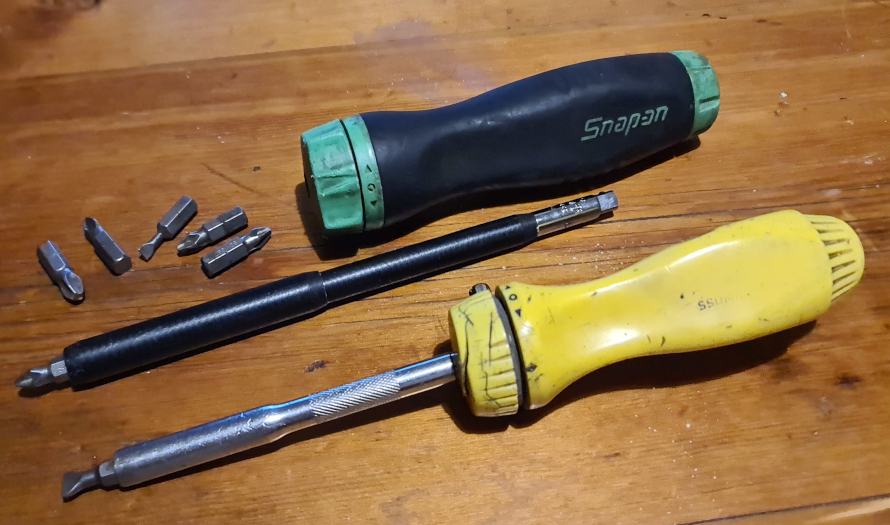
I’d like a dollar for every screw that yellow one has driven, but 20 years later I bought another one. Just that black (insulated) shank alone was $120.
An Example Of Stellar Fronius Support
If you’d like a direct example, then just this week I had a technical query that will soon become a blog post all unto itself. It involved 3-phase solar, export limiting and compliance with the network rules and AS4777. I wrote a screed to outline the problem and shot it to several manufacturers. Fronius wrote back first, on a Saturday, with an answer.
SMA has come back on Monday too with their very good take on the problem. The others haven’t as of Wednesday. Maybe that’s because I have the right email address for Fronius, and the rest of them are being filtered through marketing people or general enquiry lines, so they’re delayed.
The thing is that I have the right address for Fronius because they have the right people. It’s a self-reinforcing principle that when you have enough market share, you have enough budget to support the product.
Fronius Inverters Look Really Neat When Installed By An Aussie
Australians have been getting in trouble with the Austrians (Fronius) for years now because of the tendency to drill holes in the mounting plate to hide all the wiring. Some blokes get it wrong, ending up with an inverter full of water and a warranty problem.
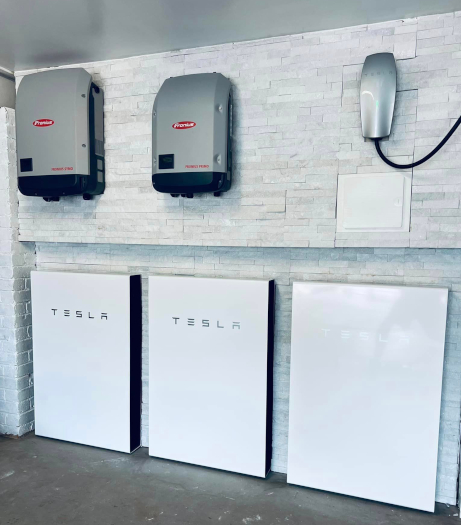
Scott Mason has really excelled on this installation, with a false wall to contain all the cables and make everything seamless.
Fronius has written a whitepaper on how or when it might be acceptable without trying to encourage the practice, but more importantly, they have taken the idea on board with the design of the new GEN24.
The new GEN24 model inverter is very well thought through, with lots of room behind the cover for wiring and ancillary equipment such as internet dongles (I actually hid an entire 8 port ethernet switch inside one!) Fronius noted Australians are allowed to drill holes if they’re careful. It makes them so neat.
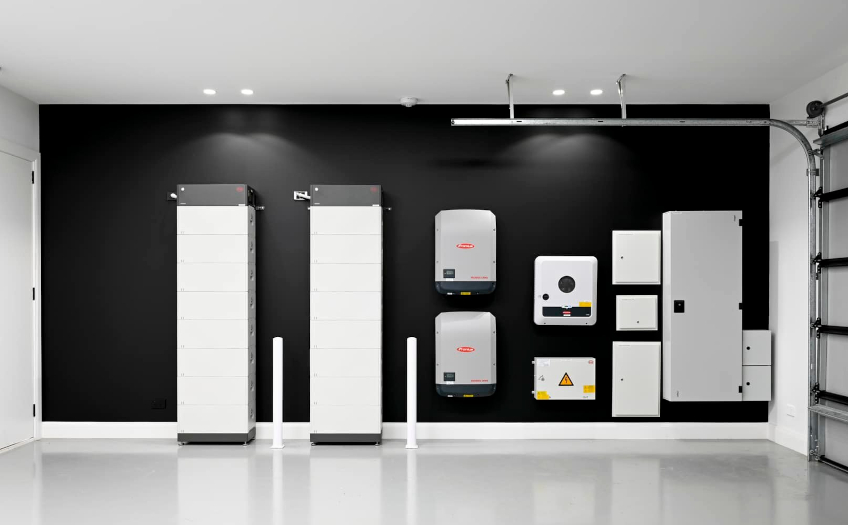
A real showstopper Fronius installation by Bluegum Electrical
Please, We Beg You
I will be sad to see the SnapINverter range retired and if that’s what Fronius intend to do, then I would offer a word of advice.
DON’T.
If Toyota can keep selling the ’79 series Landcruiser to people for eighty grand plus without cup holders, then it can only be because the product is selling itself. I have many Fronius SnapINverters that have performed faultlessly for years, and I’m installing a couple more right now. They’re going to work hard for their living, I assure you.
SMA was the previous market leader and they managed to take an inverter that every installer still loves and every owner still recognises and… and bin their reputation along with it.
Are There Any Other Compelling Points?
The GEN24 is a worthy successor that does more, not least of all battery hybrid functionality. This means you can buy the solar-only inverter for about the same price as the old SnapINverter, and if you decide to add a battery later, pay about $1,000 for some firmware and then get some wiring done in the switchboard. This is cheaper, greener and better than replacing the inverter or adding a second inverter just for the battery. But be aware that your only current battery option is a BYD battery.
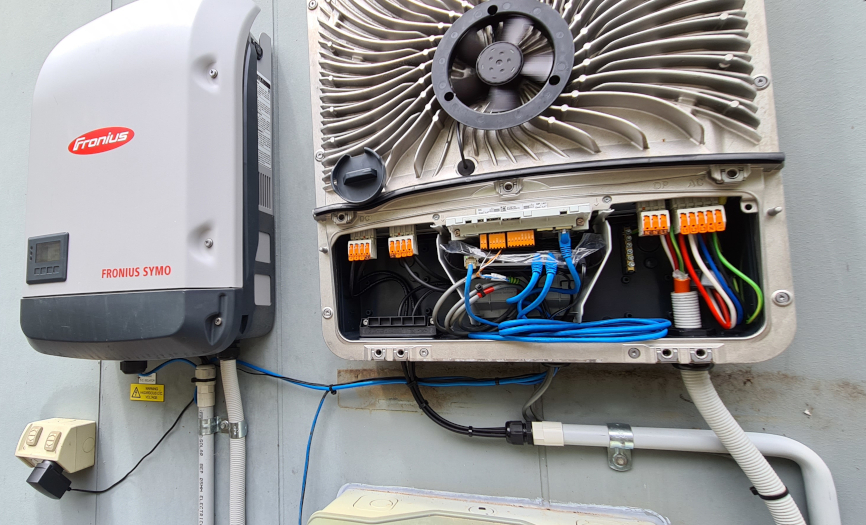
With the cover off, you can see the organic shapes of the heat sink and the generous room for wiring and internet connections. Image credit Solar Depot
They maintain open communications protocols, which means your Fronius inverter will communicate with external services like PVOutput, and you can still run things like a contactor for diverting energy to a hot water service. I refer to that as a sunshine circuit; one controlled by the onboard smarts in the Fronius inverter, which is handy for running something like a pool pump when it’s sunny. Plus there is an ecosystem of other Fronius equipment such as the Ohmpilot for heating loads and the Wattpilot, which is a really good EV charger.
With the rise of high-current solar panels, Fronius is one of the few with an excellent current capacity that will allow parallel strings. They enable your installer to create a more flexible design that can deal with difficult multi-plane roofs without the need for optimisers.
The monitoring platform offers great detail to enable you and your installer to keep an eye on things and help diagnose problems if they arise. On that note, it’s worth bearing in mind that solar power systems need an “actionable alarm” for earth fault monitoring to be compliant. A winking LED doesn’t really cut it, so having a solid internet connection and an email address you will notice is actually a legal requirement.
Oh, And GEN24 Is Much Quieter.
People whine that the SnapINverter design is noisy. They wail almost as much as the fans themselves, but I think it’s an undeniable feature.
These things work hard in the Australian heat and when they have a fan running, it means they can work even harder; yielding more energy and prolonging the life of the electronics inside. The new design fan is bigger, slower, quieter and more easily serviced, so even you, the customer, can make sure there are no geckos in it.
If you want a robust, high-quality inverter with an easy upgrade path to BYD batteries, Fronius is a great choice.
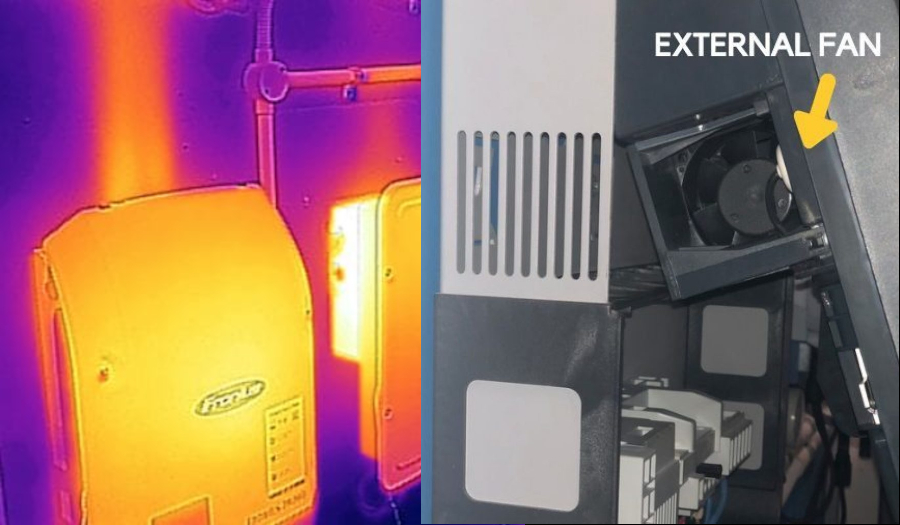
You can see the very hot ABB inverter on the right with the cooler Fronius inverter jetting warm air out of the top. Image credit MC Electrical
Fronius achieved gold for the third year running in SQ’s Installers’ Choice Awards 2023 – Best Inverters. Fronius was also voted by installers as offering the best after-sales support.
You can compare Fronius specifications and pricing with other brands on the SolarQuotes inverter comparison page, and read advice on choosing solar inverters here.

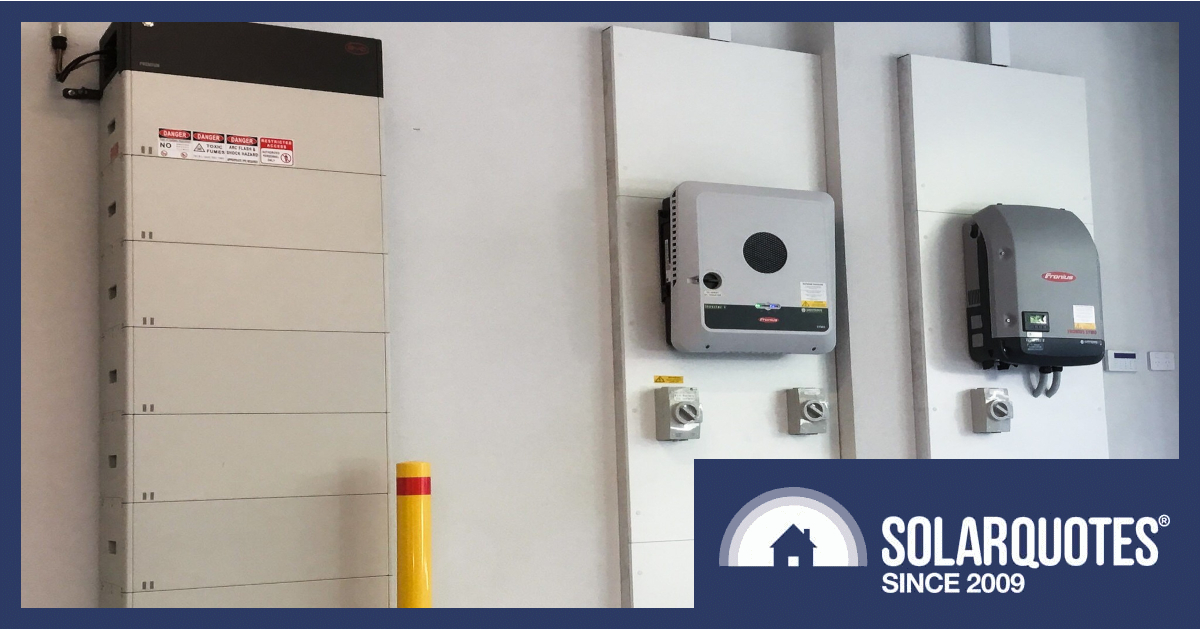
 RSS - Posts
RSS - Posts



One other point I have installed quite a few of these, warranty claims 1, dealt with promptly and no other issues, back up support is first class as well as product training, you get what you pay for
Anthony, does “surplus solar” detection for the energy diverting contactor output require a Fronius smart meter? I’m off-grid, so most of the diverters on the linked page (generally requiring CT feed-in detection) are incompatible, and the smart meter would be the same, I figure.
Thus far, I’m sneaking up on a design with two 10 kWp PV arrays, with two 5 kW Fronius PV inverters on one, and a pair of 5 KVA Victrons & MPPTs on the other. (Another MPPT on that neatly handles a little 3 kWp west array to grab late insolation to postpone battery drain as long as possible. (Allows later aircon use on a hot summer evening. Not to be sneezed at!)
If one Fronius could trip a SSR on excess solar, that’d be dead set simple _and_ economical to boot. The Victrons can frequency shift to throttle the Fronius, and that is an alternative excess solar signal, I figure. I’ve read that a far better method is to order “Victron compatible” Fronius, where communication is via datalink, IIUC.
That would leave a choice between the Wattpilot or Victron smart EVSE, depending on which works most seamlessly with the Victron DVCC mode which elegantly controls battery charge rate, yet gets DC coupled power out to loads with dynamic adjustment to changing loads. Off-grid, it’s a massive no-no to drain the battery for the HWS or the EV. (Unless it’s bushfire season, and the EV is flat.)
The EV will have to wait a bit – why didn’t they start with EV utes? Stiil, the price and range will be better when they do turn up.
Thanks for another interesting and informative article. There’s nothing quite like being well informed before making the big investment. (Lotsa batteries, particularly.)
When you say current only option is BYD batteries, You mean for only DC coupling right?
Dc coupled battery options are
BYD (HVS – HVM)
LG RESU FLEX
The Gen24 sounds great. Pity it makes out at 6 kw for single phase, making max pv of approx 8 kws.
The Gen24 Plus comes in 6, 8 and 10kw versions.
I get quite excited when I read about the gen 24 inverter. Not only does it support the BYD battery, but people are working on connection with used Nissan Leaf batteries overseas. I don’t know if such installation will be legal in Australia but what a great way to reuse an old Gen 1 leaf battery from 2012.
Ray
Fronius don’t sell ANY 3x MPPT inverters. As I have 3 separate roof spaces of different sizes, tilts and azimuths, I could only roll with Goodwe. I was pleasantly surprised with Goodwe’s same day rapid Tech support. If Fronius takes itself super seriously, why don’t they support 3x MPPTs?
Fronius inverters work great on most roofs with 3 directions:
https://www.solarquotes.com.au/blog/an-eastwest-spit-of-solar-panels-on-a-single-string-can-work-well/
So, I guess Fronius have decided that the number of roofs that *really* need 3 MPPTs is too small to worry about.
In my limited experience the Fronius inverters were really noisy compared to others. Is this still the case with latest inverters?
No. The GEN 24 is much quieter.
These comments are in sharp contrast to a previous critique, where the Fronius warranty came off second best due to the very restrictive policies in the second five-year term of the ten year warranty.
Let’s hope Fronius can meet the Asian competition with its active cooling system and changes the warranties in the future.
The previous critique was a deep dive into the documented warranty. i.e. what Fronius are happy to have in black and white. Interestingly, Fronius’s real-world attitude to warranties in Australia is much better than their documented warranty.
This post is a real-world installer’s experience.
I’ll leave you to decide why Fronius document one thing and do another in Australia.
“battery hybrid functionality” but only compatible with 1 battery. What utter crap, this is fanboyism.
$1000 for a firmware upgrade, Disgraceful EXTORTION.
Apparently they fixed the noise issue yet you gaslight people for complaining about it.
Where is the feature to use excess solar to charge an EV? I want an inverter to manage my HWS, Pool pump, Air conditioning AND EV charger to maximise my solar over grid.
Don’t even get me started on their inverter and solarweb software, what a joke. You need to start advocating for your customers not fanboyism.
Hi Jojo,
As a long term Linux user I admire free software, but as a retired software developer of 30 years, I’m aware of the development cost of reliable bug-free embedded software. (It can run into the millions when you’re running an 8 member team for more than a year on a substantial project, with testing, field trials, and certification on top.) A thousand sales at a thousand bucks might nudge break even, but (secret spoiler here) the bean counters like some black ink as well. (Dunno why. 😉
The old Fronius seems to have a programmable relay output, able to be activated on a user-selected level of surplus PV generation. Dunno if the new one also has it. But in any case, there are smart EVSEs which can be configured to use only surplus PV. I don’t have all the Fronius Wattpilot (Smart EVSE) & Ohmpilot (HWS diverter) details, but a lot of fun can be had chasing enough details to figure out if it suits your goals. (Questions to vendors give them a heads up on emerging market needs which can feed their bottom line, if they’re onto it.)
There’s also Victron’s DVCC (Distributed Voltage and Current Control mode), which their smart EVSE probably leverages in order to only use surplus PV. It may cost me a bit to put in two battery inverters and two PV inverters for a 20 kWp system, but the system configuration, dynamic energy management, and logging, are attractively transparent, documented, and amenable to inclusion of opensource monitoring, optionally running on a Raspberry Pi. (Er, yeah, running Linux. So pretty darn rock solid. (Good enough for all 500 top global supercomputers, Starlink satellites, and the internet backbone, it’s been good enough for me for a couple of decades, now.))
On Victron, it’s one of their GX controllers you configure to manage energy flow and priority. The Fronius Wattpilot will doubtless talk to its inverter mate,
but you’ll need to check your needs against what can be found out there when we look. Even Youtube clips can be informative.
High Erik,
Please excuse my ignorance ,
but what does EVSE stand for?
Electric Vehicle ? ?
Electric Vehicle Supply Equipment
From my EV Charging 101 “To be technically correct, I should call the devices that you plug into your car at home EVSEs (Electric Vehicle Supply Equipment). But that would confuse most laypeople, so at the risk of angry emails from retired engineers, I’m calling these devices ‘chargers’.”
I’m currently in the quotation phase and was most likely looking at the Gen24 fronius inverter. One of the installers claims they don’t use them because they have had issues with the fans and because the units aren’t fully sealed geckos getting in which aren’t covered under warranty. Is that a legit concern. (I saw it mentioned in the article) They recommended the cheaper sungrow without a fan but which was fully sealed.
Everything is read the sungrow are a decent unit but considered a cheaper lower end product.
Hi David,
Sungrow are a more economical choice and there’s nothing wrong with that, but I usually explain it like this; by simple virtue of being a moving part, a fan is less reliable.
However if there wasn’t a damn good reason to have one the Austrians wouldn’t install it in the first place.
Fronius make welders as well as inverters, absolute top class ones at that. What they share is the need for thermal management of power handling electronics. In other words a modern tig welder might be the size and weight of a couple cartons of beer whereas an old one is the size of your fridge… and they all have fans, just like your computer does. When you want better yield and longer life you need to actively cool your equipment, not just bolt it to a big piece of aluminium and hope.
The best part about the new Gen 24 is that they are much quieter than the older generation and if you do have problems with wildlife, there’s two quarter turn screws to remove the cover and you can clean the geckos out yourself.
Cheers